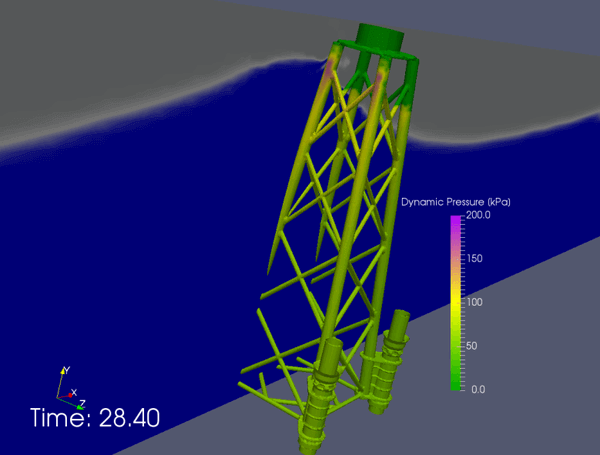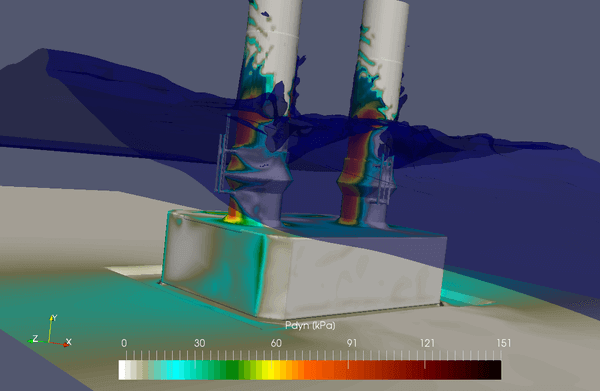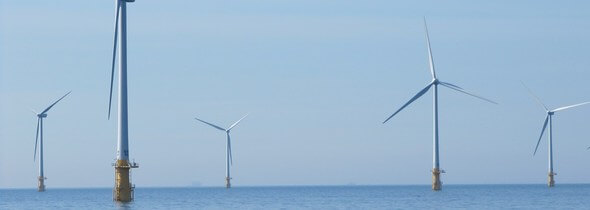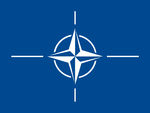Simulating typhoons can lead to a less conservative design of offshore foundations
This is probably why Computational Fluid Dynamic (CFD) simulations have gained popularity and are often used to simulate the effects of wave loads on offshore wind turbine foundations. However, even with these new methods, using the right data in a simulation – e.g. the “right kind of waves” – is vital and can affect not only the design, but also the costs.
NIRAS’ experience from the market shows that extreme weather conditions are often interpreted to the “extreme” – simulations of extreme events, such as typhoons, can provide detailed weather data and thus a potentially less conservative input in the CFD model.
Lack of extreme and consecutive observations
Recent experiences at NIRAS have highlighted that regular waves are not sufficient as a basis for designing the most optimal offshore wind turbine foundations, particularly in areas with nonlinear extreme waves – like in Taiwan or Northern Europe.
Besides the fact that regular waves are not sufficient, the observations often lack a consecutive time series of metocean parameters; coherent observations of wind, weather and climatic conditions in a particular location. However, these parameters are extremely relevant for optimal foundation design. Consecutive parameters are particularly very important for correct simulation, especially with regard to the differences in wind and weather in different parts of the world. An example here is Taiwan, an area that many developers are focused on.
Extreme weather does not mean higher costs
According to Tony Erik Bergøe, senior specialist at NIRAS, using regular waves and water levels for your simulation or using extreme weather, e.g. typhoons, makes a difference. Typhoons, especially, are a known weather phenomenon in Taiwan:
“We can see that it adds value. By running simulations based on different criteria, we can enlighten extreme incidents. This means that our clients can be less conservative when it comes to the design. Maximum water level, wind and waves aren’t necessarily correlated, which is of major importance to the design and ultimately the cost”.
NIRAS has applied a new approach and used simulations from actual incidents – in this case actual typhoons in Taiwan – which means that the design can be optimised to the actual conditions even in areas with extreme weather.
Brave new world in Taiwan
“Taiwan is in the same situation as we were in Northern Europe 10 years ago. They have not used their seabed before and they lack data on wind and offshore – exactly the same situation as in Denmark a decade ago. Since then, however, we have accumulated a wealth of important data. That is why we run several actual typhoons through simulation to ensure we obtain the best data before designing the foundations for the wind turbines,” says Tony Erik Bergøe.
According to Tony, NIRAS will continue to use simulation on future projects, to increase and improve knowledge for the design of future wind turbines.


Why Computational Fluid Dynamics (CFD) is important:
- A formula to describe wave run-up (the vertical height above the sill water level to which water from a specific wave will run up the face of a structure) exists for monopiles but not for more complex structures.
- Wave slamming/breaking waves occur more often than previously assumed. For a sea state with 2000 waves, 2-3 of them, not necessarily the largest ones, will break.
- Global loads and overturning moments on more complex structures but also on the individual members.
- Source:
- NIRAS
- Author:
- Press Office
- Link:
- www.niras.com/...
- Keywords:
- NIRAS, typhoon, offshore, foundation, weather, costs, Taiwan




























